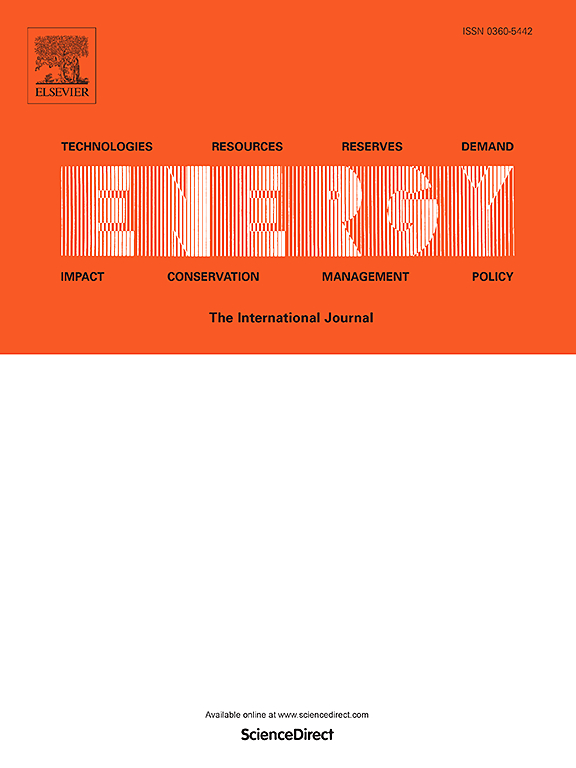Effect of the anisotropy of gas diffusion layer on transport characteristics and performance of a PEM electrolysis cell
IF 9
1区 工程技术
Q1 ENERGY & FUELS
引用次数: 0
Abstract
The anisotropy of the porous materials imposes a substantial effect on the multi-physics transport characteristics in the gas diffusion layer (GDL). The present study developed isotropic and anisotropic three-dimensional, two-phase, non-isothermal models of the Proton Exchange Membrane electrolysis cell (PEMEC). The prediction of electrochemical kinetics is coupled with the mass and heat transfer models to derive the distribution of key parameters and investigate the impact of GDL anisotropy on PEMEC performance. It is found that the GDL anisotropy is mainly caused by the GDL deformation. The deformation reduces GDL porosity and permeability, hindering gases from escaping but enhancing the GDL heat conduction. The temperature of the isotropic GDL is about 4–6 K higher than the deformed GDL. The isotropic PEMEC model also overestimates the cell performance by about 10 % in terms of current/power density at the same cell voltages. Besides, it underestimates the non-uniformity of species concentration and local reaction rates. The local current density in the catalyst layer (CL) for both models shows a bimodal pattern, whereas the deformed GDL model exhibits a more uneven distribution. The parameter-sensitive analysis shows that the smaller contact angle, higher permeability, higher porosity, and higher temperature of the GDL benefit the PEMEC performance.
求助全文
约1分钟内获得全文
求助全文
来源期刊

Energy
工程技术-能源与燃料
CiteScore
15.30
自引率
14.40%
发文量
0
审稿时长
14.2 weeks
期刊介绍:
Energy is a multidisciplinary, international journal that publishes research and analysis in the field of energy engineering. Our aim is to become a leading peer-reviewed platform and a trusted source of information for energy-related topics.
The journal covers a range of areas including mechanical engineering, thermal sciences, and energy analysis. We are particularly interested in research on energy modelling, prediction, integrated energy systems, planning, and management.
Additionally, we welcome papers on energy conservation, efficiency, biomass and bioenergy, renewable energy, electricity supply and demand, energy storage, buildings, and economic and policy issues. These topics should align with our broader multidisciplinary focus.
 求助内容:
求助内容: 应助结果提醒方式:
应助结果提醒方式:


